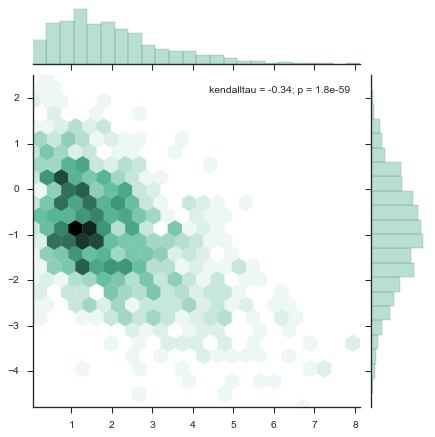This Review gives an overview of intersting stuff I stumbled over which are related to machine learning. Most of it was posted in KITs machine learning group (on Facebook).
A lot of stuff can be found in my article about NIPS 2016.
New Developments
- Random forests for courier detection: Has a rampaging AI algorithm called Skynet really killed thousands in Pakistan?
Live Demos and Websites
Quickdraw
Quickdraw is a program which tries to guess what you drew. However, it is difficult to check if they really apply machine learning, because it tells you what to draw and then tries to recognize it.

It looks very much like an attempt to get lots of training data. However, this plan might not work that well: Interesting Quickdraw Fails
You might find more stuff like Quickdraw on aiexperiments.withgoogle.com.
Loss Functions
lossfunctions.tumblr.com is a blog created by Andrej Karpathy where he collects - well, let's call them "interesting" - loss functions.
Eyescream
Have you heard about GANs?
Eyescream is a demo for the generator.
Publications
Deep Neural Networks are Easily Fooled
The input of CNNs for image classification can be manipulated in two ways:
- An image, on which a human does not recognize anything (e.g. white noise) gets a high score for some object class.
- An image on which a human is certain to recognize one class (e.g. "cat") is manipulated in a way that the CNN classifies with high certainty something different (e.g. "factory").
See also:
- Anh Nguyen, Jason Yosinski, Jeff Clune: Deep Neural Networks are Easily Fooled: High Confidence Predictions for Unrecognizable Images on arxiv.
- Evolving AI Lab: Deep Neural Networks are Easily Fooled on YouTube in 5:33 min.
- Google: Inceptionism: Going Deeper into Neural Networks. 17.06.2016.
Breaking Linear Classifiers on ImageNet
Andrej Karpathy has once again written a nice article. The article describes the problem that linear classifiers can be broken easily.
Hinton commented something simmilar on Reddit.
Where am I?
One gives the neural network a photo and it tells you where it was taken.
LIME
"Why Should I Trust You?": Explaining the Predictions of Any Classifier deals with the problem of analyzing black box models decision making process.
Lip Reading
See the paper LipNet: Sentence-Level Lipreading for details.
More
- Learning to Protect Communications with Adversarial Neural Cryptography
- 2016 Report: One Hundred Year Study on Artificial Intelligence (AI100)
Software
Seaborn

Seaborn is a Python package for the visualization of data and statistics.
See stanford.edu/~mwaskom/software/seaborn.
RecNet
Jörg made recnet publicly available. It is a framework based on Theano to simplify the creation of recurrent networks.
Image Segmentation Using DIGITS 5
I didn't try it by now, but the images in the article Image Segmentation Using DIGITS 5 look awesome. I would be happy to hear what you think about it.
Keras.js
Run Keras models (trained using Tensorflow backend) in your browser, with GPU support. Models are created directly from the Keras JSON-format configuration file, using weights serialized directly from the corresponding HDF5 file.
See github.com/transcranial/keras-js for more.
Interesting Questions
- When being in a perfect “Long Valley” situation, does momentum help?
- Are non-zero paddings used?
- Why do CNNs with ReLU learn that well?
- Is there a metric for the similarity of two image filters?
Miscallenious
- Eugenio Culurciello's blog: Neural Network Architectures
- Aaditya Prakash's blog: One by One [ 1 x 1 ] Convolution - counter-intuitively useful
- Adit Deshpande's blog: The 9 Deep Learning Papers You Need To Know About (Understanding CNNs Part 3)
- Artificial-intelligence system surfs web to improve its performance (paper)
- The 9 Deep Learning Papers you need to know about: Explains AlexNet, ZDNet, ResNets, (Fast(er)) RCNNs, GANs
- The Neural Network Zoo
- Selective Search: Creating region proposals for object detection
- GANs
- Adverserial Examples
- Google Projector: Display high-dimensional data
- Andrej Karpathy: Yes you should understand backprop
- OpenNMT: A machine translation system
- Pete Warden's blog: Why GEMM is at the heart of deep learning
- StackExchange Dataset
Meetings
- London, 4. December 2016: Data Visualization Challenge
- Barcelona, 5. December 2016 - 10. December 2016: Neural Information Processing Systems (NIPS) (Link)